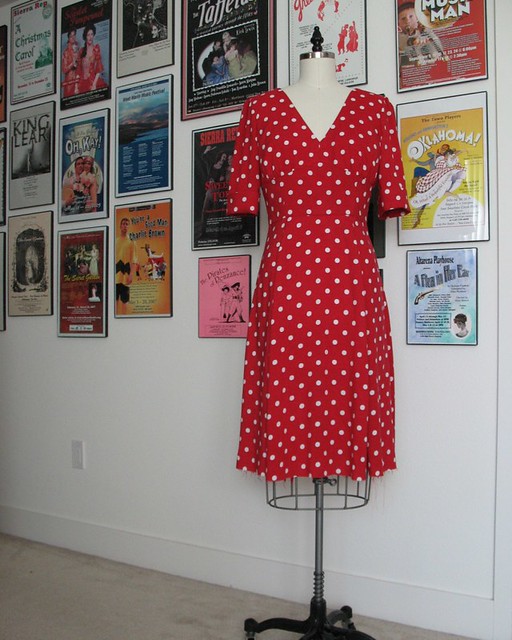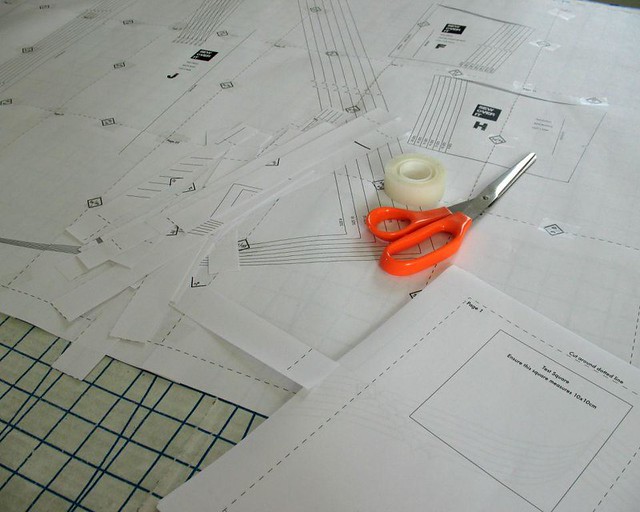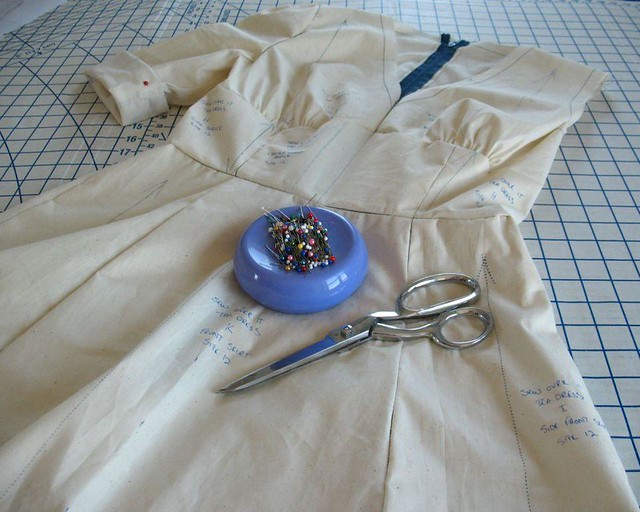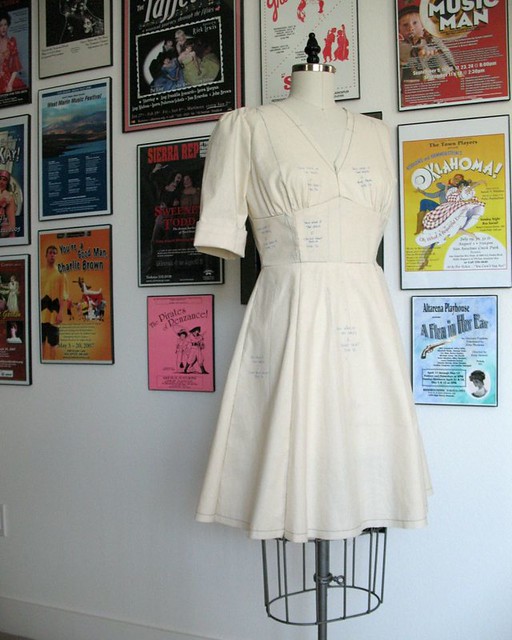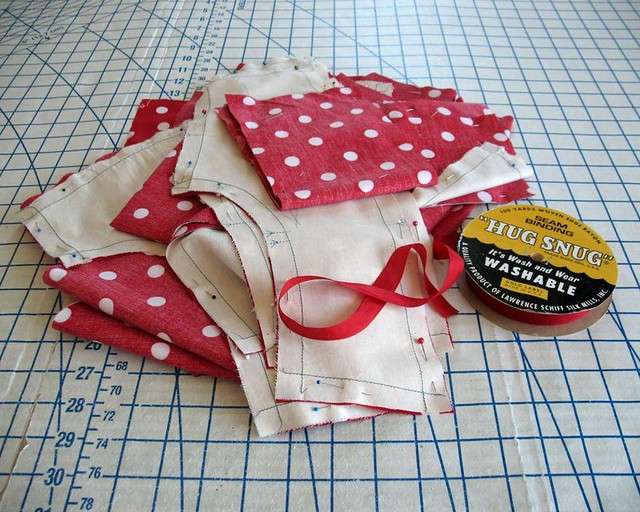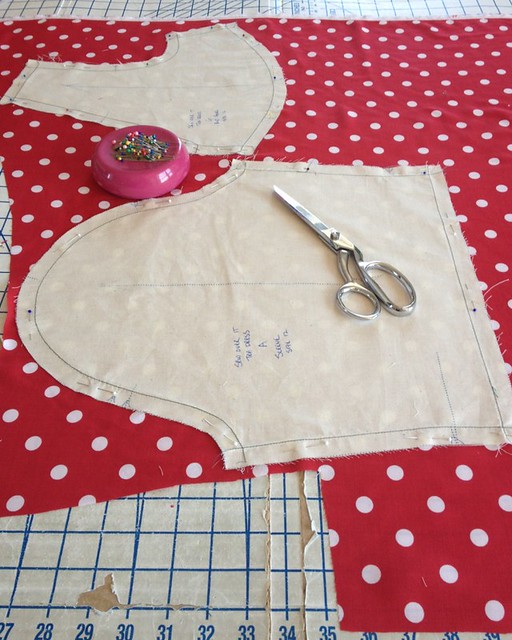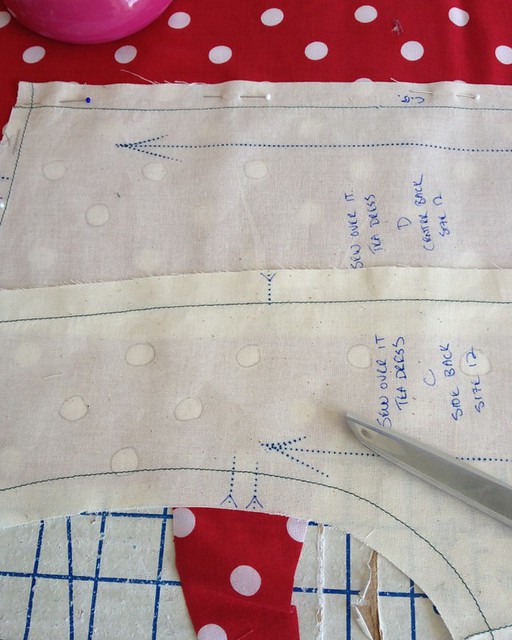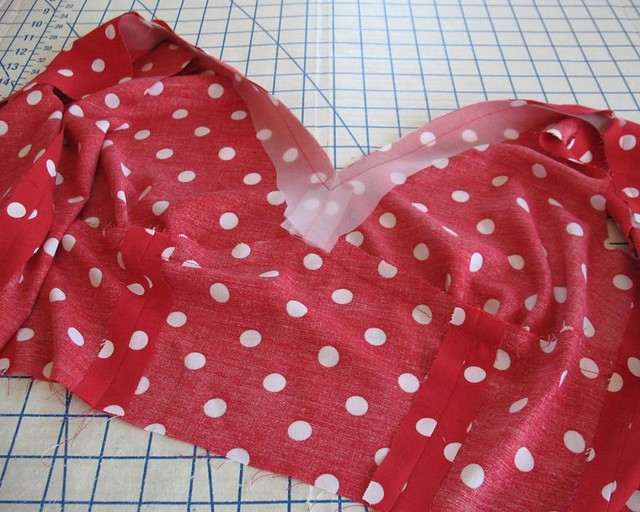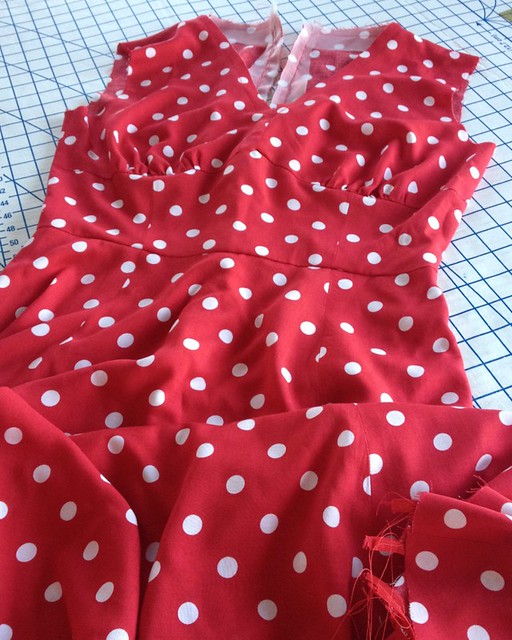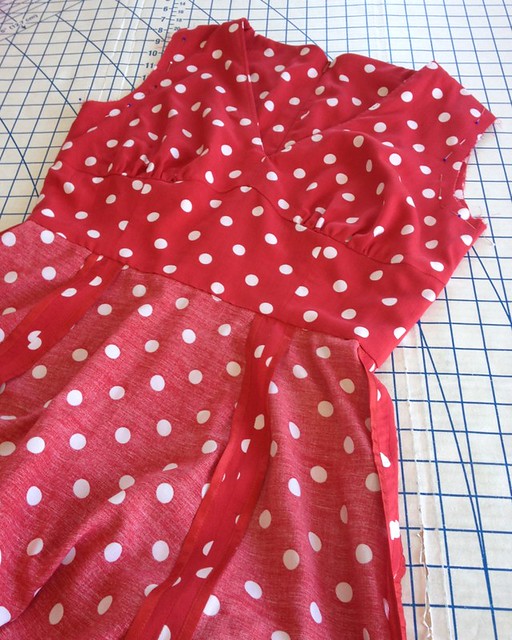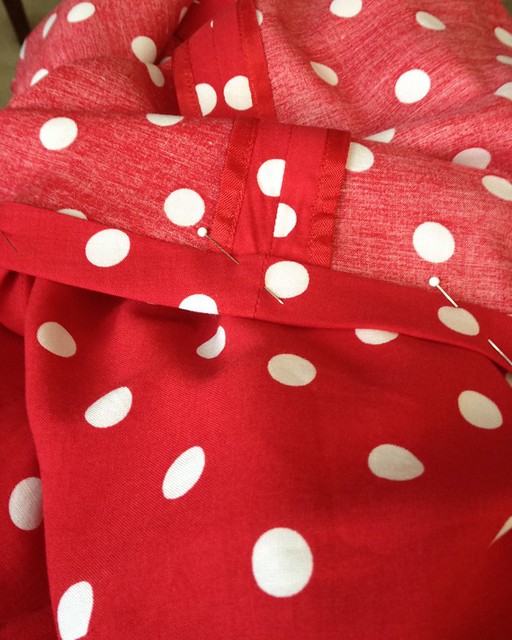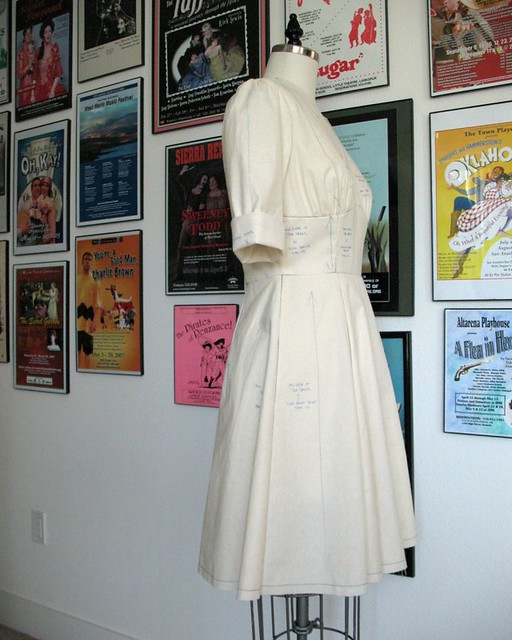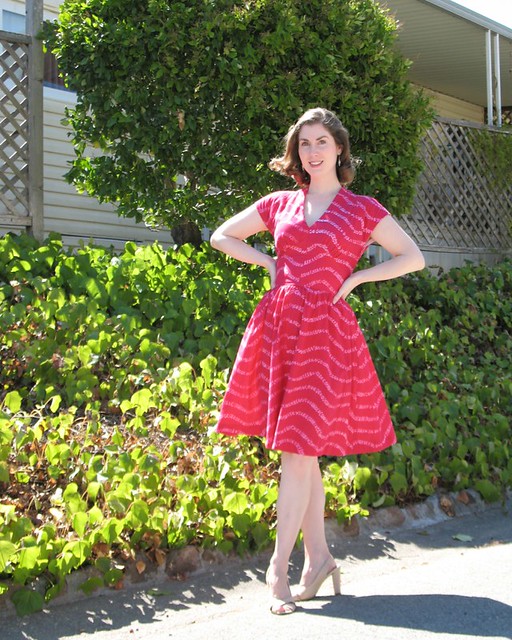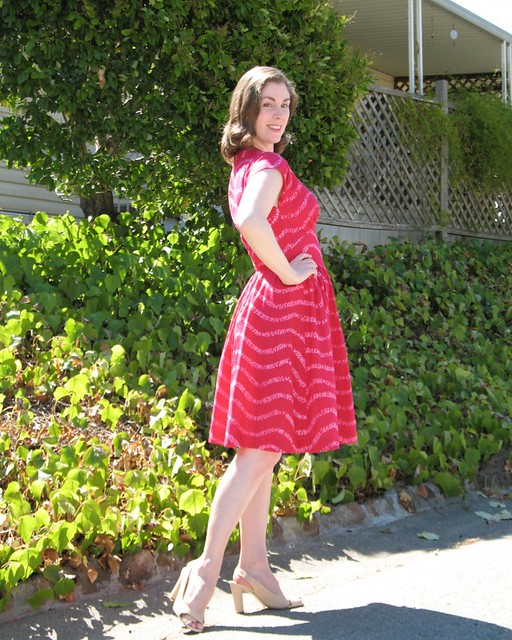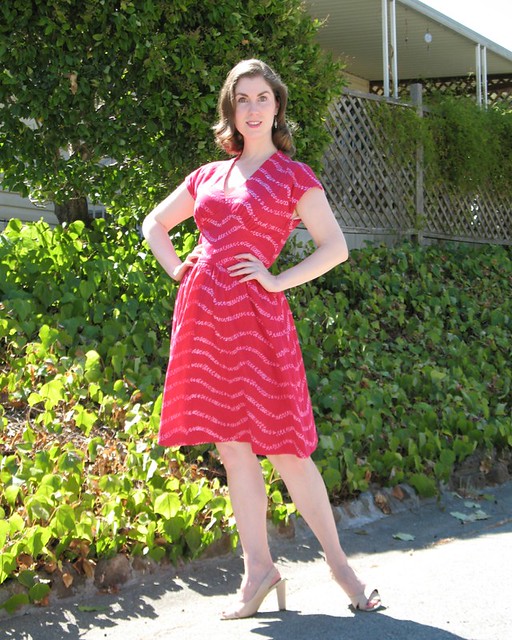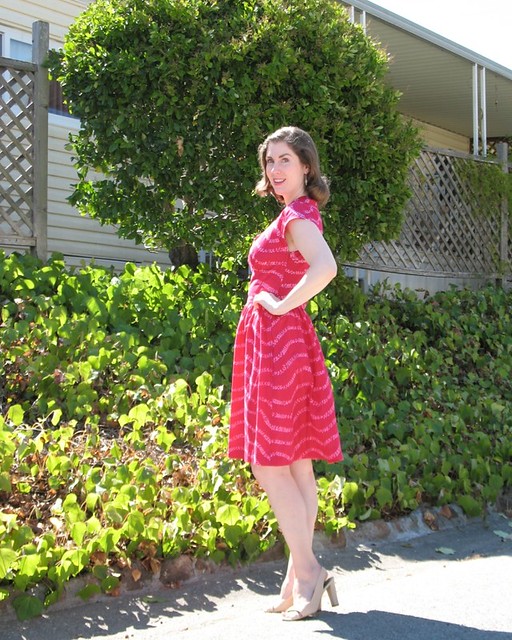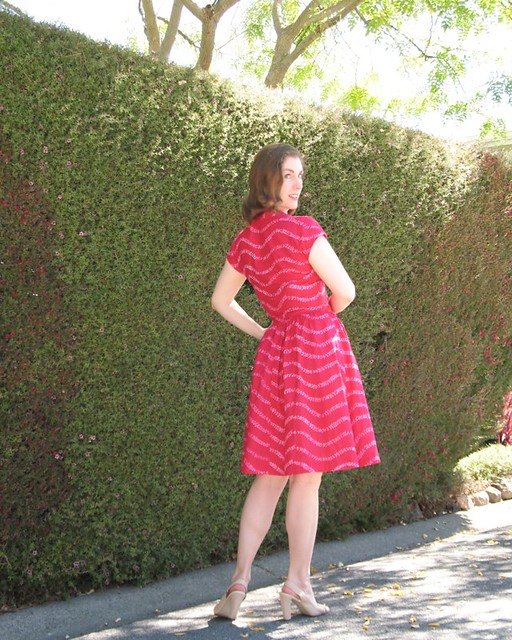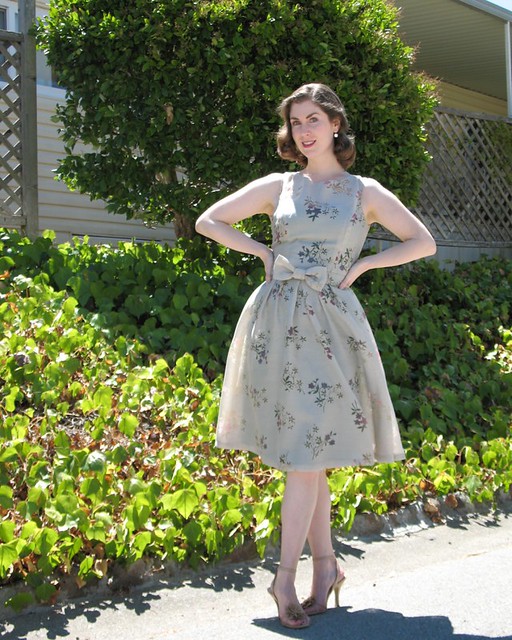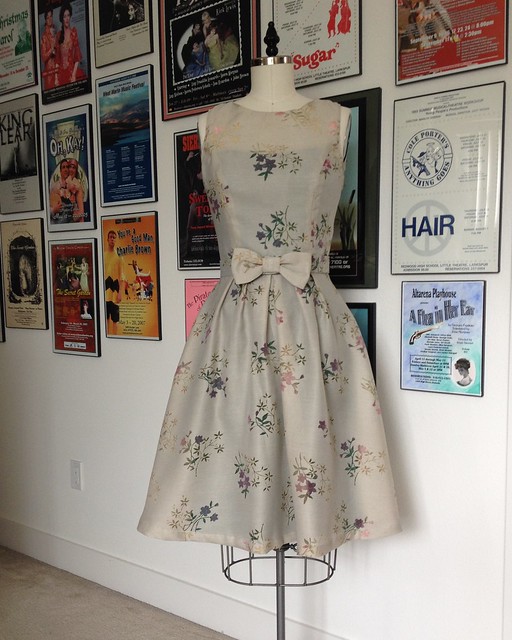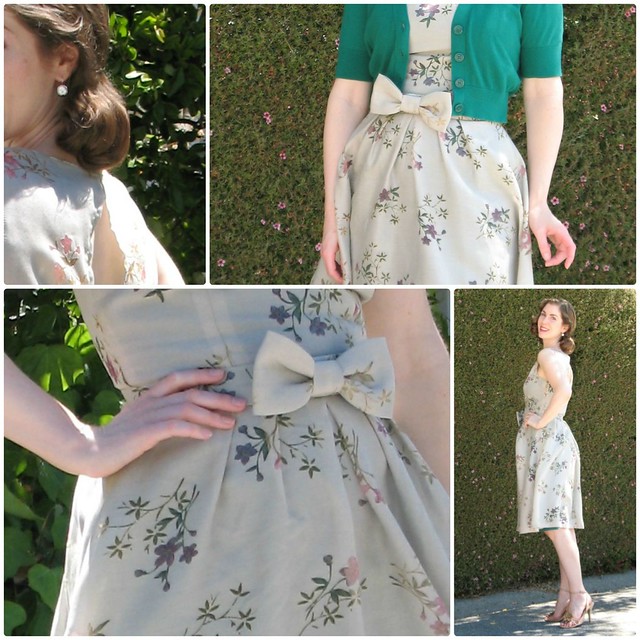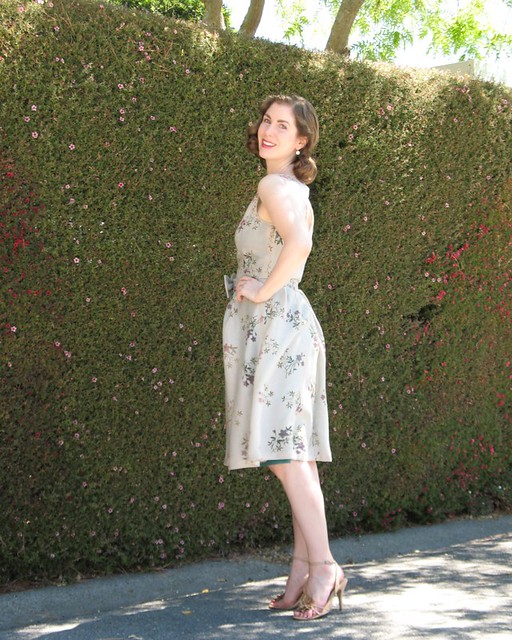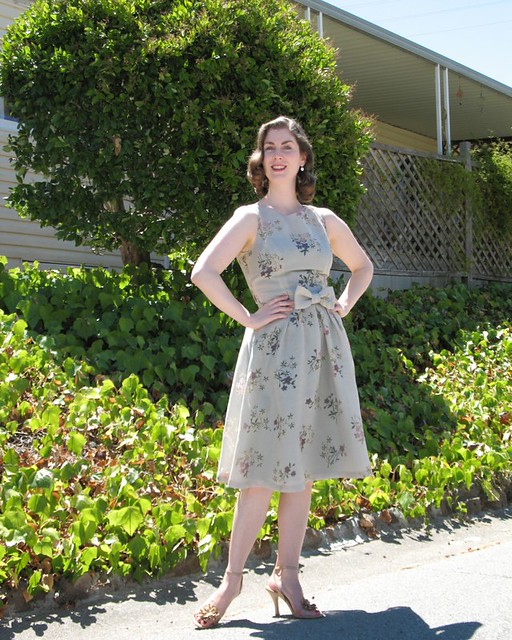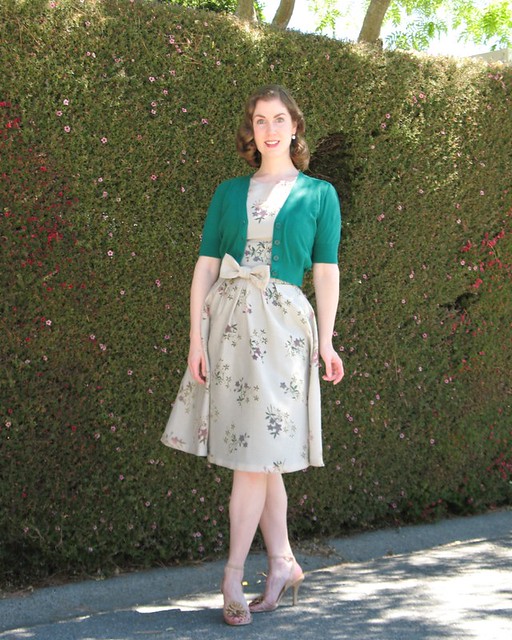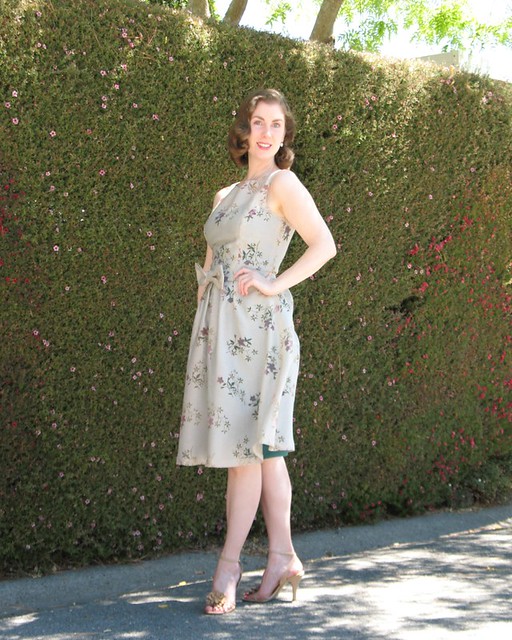Velvet has a reputation for being tricky to sew, but it is
such a beautiful textile that any extra care it requires is worth it!
At its most basic, velvet is a woven fabric with a secondary yarn that is cut open to create a pile. That pile has a nap or directionality which creates
incredible dimension and texture to the fabric. In fact, velvet fabric often changes color depending on how it is draped - pretty spectacular, and something that needs to be taken into account when constructing a garment.
CUTTING
The first thing to be aware of is your cutting
layout. All pieces for a project should be cut in a
single direction (when determining yardage requirements make sure to keep this in mind - multi-directional layouts may save on yardage, but they will not work for velvet).
Cutting the fabric with the nap running in an upward
direction on the body creates a rich and deep color. When the nap lays in a downward direction, the color tends to be lighter in shade. There really is no right or wrong direction, just so long as it is consistent throughout the garment. For a dark printed velvet, it might be wise to keep the nap facing downward in order to see more of the print. I feel that most solid colors look better when the nap faces in an upward direction to take advantage of the incredible colors.
Be aware that cutting into any velvet fabric is
going to make a mess. Tiny little
pieces of pile will end up all over your cutting surface (and probably your
clothing as well). Keep a vacuum nearby, or at the very least, a lint roller!
MARKING
Velvet fabrics can be irritating to mark. Many fabric markers and chalks will not show up, or will brush off with minimal handling. Thread tracing and tailors tacks are an excellent way to mark darts and notches on the fabric.
SEWING
Basting is extremely important with velvet fabrics. I would recommend one line of hand basting just inside the stitching line and another just outside the stitching line. This will keep the two fabric layers from
shifting under the sewing machine.
My favorite hand basting thread is
Gutermann silk (the blue spool). Ten years ago I had never worked with silk thread and did not see the point . . . now I cannot live without it. The silk will slide right out of your fabric without catching or pulling on the fabric. This is especially important with a textile like velvet. It is possible to pull the pile right out of the fabric while trying to remove machine stitching, so it should be avoided at all costs.
A walking foot can be helpful when working with velvet. I have had some
luck with a roller foot which eliminates drag on the fabric. Lowering the tension on your machine is also something to try. Stitch length should be increased to account for the thickness of your fabric. Pull slightly with both hands on either side of the presser foot to maintain an even tension.
Most importantly, take your time. Velvet is a special fabric and requires a bit
of finesse. A muslin is a good idea - velvet is not a fabric that plays well with a seam ripper, so it would be wise to take care of any fitting issues beforehand - your fabric will thank you!
IRONING
Many fabrics thrive under a hot iron . . . velvet is not one
of them. An iron will flatten the pile,
so an iron should never be used directly on the fabric. Hover your iron just above the fabric and use
steam to control seam allowances.
Special
needle boards are made for the task of ironing velvet fabric without affecting the pile, but they can be
rather expensive. A fluffy folded towel does an excellent imitation of a needle board,
as does an extra scrap of your velvet fabric. Testing your pressing method with a scrap of fabric is definitely recommended!
CARE
Most velvets come with a “dry clean only” care option. As someone who hates taking things to the dry
cleaner, I generally hand wash my fabric, velvet included.
I have found that a quick adventure in the
dryer often helps to fluff up the wet pile and even out the texture of a smooth
velvet after a dunk in a basin of water. As with any fabric, I would rather know what the outcome will be post-cleaning before I spend hours constructing a garment. If you are unsure if your fabric will survive the wash, testing a scrap is always a good idea.
Something to be aware of is that over time, the pile may flatten. This generally happens on parts of the garment that see the most wear (often the back of a skirt). The fibers can sometimes be steamed back into shape, but this is not always the case. Crushed and panne velvets are less likely to show this type of wear because the pile has already been crushed throughout the fabric.
When Autumn comes around every year, I am ready to pull out my velvet fabric. As George Costanza says, "I would drape myself in velvet if it were socially acceptable." And gosh darn it, being ensconced in velvet sounds like heaven to me!
[Click on image for source]

